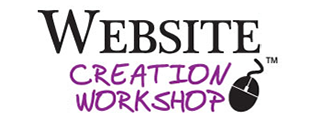One key element of a WordPress website is the concept of a ‘post’. If you understand the difference between a ‘post’ and a ‘page’ with WordPress, then you can strategically decide how you want to setup YOUR website.
We are all familiar with web ‘pages’; those are pages that you see when you visit a website. For example https://websitecreationworkshop.com/next-workshop/ is a page on the Internet that has the schedule for the upcoming workshop.
WordPress also has a thing called a ‘post’. For example, this page you are reading now is actually a ‘post.’ Most people think of posts as the ‘blog’ part of your WordPress website. That’s where you put out your daily/weekly/monthly posts of what you are doing, your news, tips, or anything else you want to dialog with your readers about. I like to think of a ‘post’ as a newsletter.
When you make a ‘post’ on your WordPress website, that information goes out to anyone who has subscribed to you. They can be subscribed via email, (as you can do by entering your info in the box below), or they can be subscribed via RSS (really simple syndication).
Watch this video to learn more about the differences between ‘post’ and a ‘page’:
To summarize, here are the main differences between a ‘page’ and a ‘post’:
Page
- Static (ie. not date-specific). In general, you don’t keep adding new pages often. ‘About’ page is a good example.
- Organized in hierarchy (aka. ‘parent‘ and ‘child‘).
- Option to use different templates for different pages.
Post
- Each post is tied to a publish date/time.
- Syndicated via RSS feed, allowing the post readers to subscribe to the blog and to get notified when a new post gets published.
- Organized by category and tags.
- You can interact with your blog readers, using the comment function.
I teach this topic in more details in my Website Creation Workshop. To find out more about the Website Creation Workshop, go here!


































